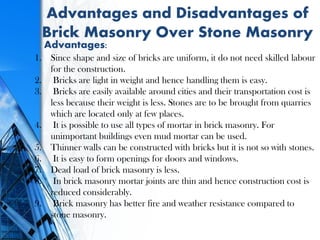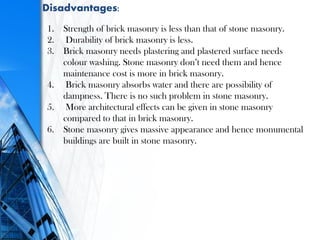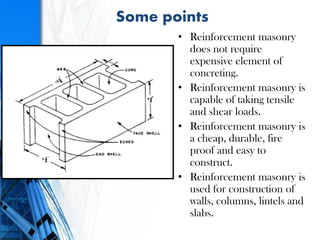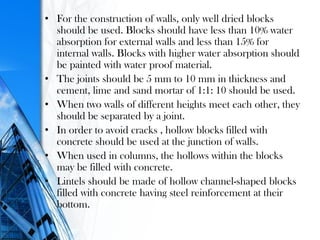The document discusses two key construction processes: pointing and plastering, outlining their methods and objectives, as well as detailing types of materials used. Pointing is focused on finishing mortar joints to enhance aesthetics and weather resistance, while plastering involves coating uneven surfaces to provide a smooth, durable finish. It also compares brick masonry to stone masonry, highlighting advantages and disadvantages of each in construction.


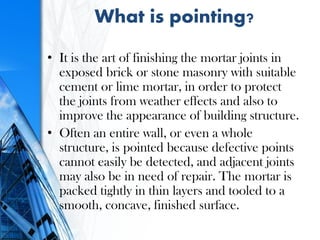

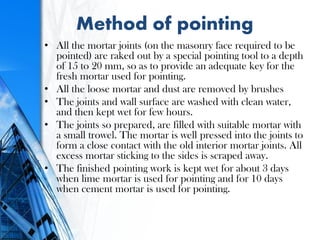
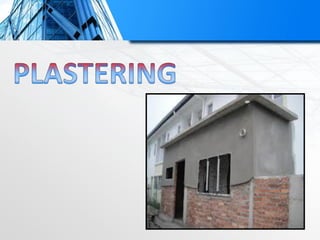


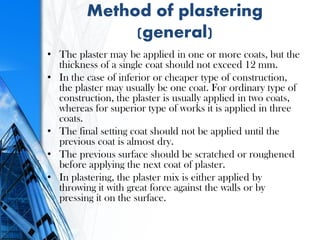

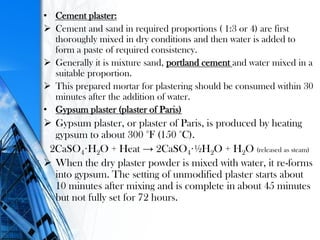

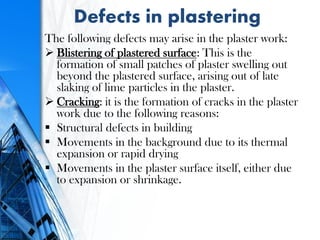
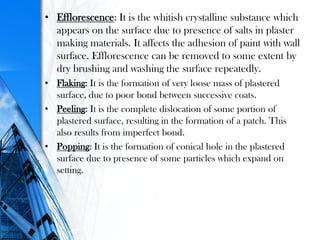




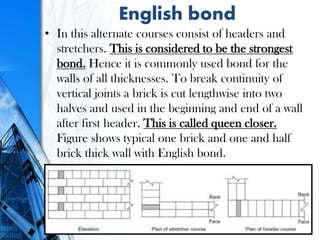

![Flemish bond
• In this type of bond each course comprises of alternate header
and stretcher figure. Alternate courses start with stretcher and
header. To break the vertical joints queen closers are required, if
a course starts with header. Every header is centrally supported on
the stretcher below it.
• Flemish bonds may be further classified as:
I. Double Flemish Bond
II. Single Flemish Bond.
• In case of double flemish bond, both faces of the wall have
flemish look, i.e. each course consist of alternate header and
stretcher, whereas single flemish bond outer faces of walls have
flemish look whereas inner faces have look of English bond [Fig
(a), (b)].
• Construction of flemish bond needs greater skill. It gives more
pleasing appearance. But it is not as strong as English bond. If
only pointing is to be used for finished wall, flemish bond may be
used to get good aesthetic view. If plastering is going to be used, it
is better to use English bond.](https://image.slidesharecdn.com/cat2b-150118064545-conversion-gate02/85/pointing-plastering-bonding-21-320.jpg)

